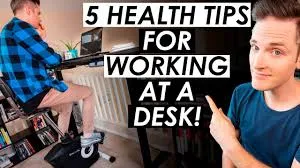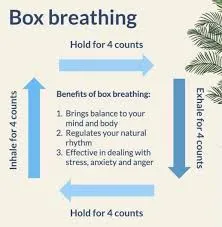
How to Stay Active While Working a Desk Job
In today’s fast-paced and digitally connected world, many people spend the majority of their day sitting at a desk. Desk jobs, while often well-paying and stable, come with a significant downside: a sedentary lifestyle. Prolonged sitting has been linked to numerous health issues, including obesity, cardiovascular diseases, and musculoskeletal problems. However, staying active while working a desk job is not as difficult as it may seem. With some planning, intentionality, and small changes to your daily routine, you can incorporate movement into your workday and significantly improve your health and well-being.
The Risks of Sitting for Long Periods
Before we dive into how to stay active at work, it’s important to understand why this is necessary. Research has shown that sitting for long periods is harmful to your health. When you sit for extended periods, your body goes into a state of low energy expenditure. This leads to the weakening of muscles, particularly those in the legs and lower back, and can cause poor posture. Over time, sitting for too long can increase the risk of developing health conditions such as:
- Obesity: Sitting for long stretches reduces the body’s ability to burn calories and can contribute to weight gain.
- Heart Disease: Prolonged sitting increases the risk of cardiovascular disease by affecting blood circulation and leading to higher cholesterol levels.
- Musculoskeletal Disorders: Sitting in poor posture for long periods can lead to back pain, neck strain, and other musculoskeletal issues.
- Mental Health Issues: Sedentary behavior has been linked to increased levels of stress, anxiety, and even depression.
- Increased Risk of Cancer: Some studies suggest that prolonged sitting may increase the risk of certain types of cancer, including colon and breast cancer.
The good news is that there are several ways to counteract these risks and stay active even while working in a sedentary environment.
Set a Timer to Move
One of the easiest ways to stay active is by setting a timer or reminder to move every 30 minutes. This simple practice can remind you to get up from your desk, stretch, or take a short walk. These breaks not only help alleviate muscle stiffness and improve circulation but also refresh your mind, making you more productive when you return to your tasks.
How to Implement This:
- Use your phone or computer to set reminders every 30 to 60 minutes.
- Take a quick break to stretch or walk around the office.
- Try doing light exercises, like squats or lunges, during your break.
Invest in a Standing Desk
One of the most effective solutions for combating a sedentary lifestyle is to invest in a standing desk. Standing desks allow you to alternate between sitting and standing throughout the day, which has been shown to improve posture and reduce back pain. The key is to find a balance: standing for too long can also cause discomfort, so it’s important to switch between sitting and standing regularly.
Tips for Using a Standing Desk:
- Start by standing for 15-20 minutes every hour, and gradually increase the time as you become more accustomed to it.
- Make sure your desk is at the right height to avoid straining your neck or wrists.
- Use an anti-fatigue mat if standing for long periods to reduce pressure on your feet and legs.
Desk Exercises
You don’t need a gym membership or fancy equipment to stay active while working at your desk. There are several simple exercises you can do right at your workstation to keep your muscles engaged and your body moving.
1. Seated Leg Raises
While sitting in your chair, extend one leg straight out in front of you and hold it for a few seconds. Slowly lower it back down and repeat with the other leg. This exercise helps strengthen your leg muscles and improves circulation.
2. Chair Squats
Stand up from your chair, then lower your body as if you’re about to sit down. Before your bottom touches the chair, stand back up again. This movement activates your thighs, glutes, and core.
3. Torso Twists
Sit upright in your chair with your feet flat on the ground. Place your hands behind your head and twist your torso to one side, holding the stretch for a few seconds, then twist to the other side. This exercise helps relieve tension in the back and core.
4. Neck and Shoulder Rolls
Sit up straight and gently roll your shoulders backward, then forward. Follow this by slowly tilting your head from side to side to relieve neck stiffness.
5. Wrist Stretches
Desk work can lead to wrist pain or carpal tunnel syndrome. To prevent this, extend one arm in front of you with the palm facing down. Use the other hand to gently press the fingers back towards your wrist to stretch the forearm muscles.
These exercises can be done throughout the day to maintain flexibility and avoid muscle stiffness.
Take Active Breaks
Rather than spending your breaks sitting at your desk or scrolling on your phone, use this time to engage in physical activity. Even small bursts of exercise can make a difference. Consider taking a brisk walk, climbing stairs, or doing a few jumping jacks. Physical activity during your breaks can boost your energy levels, enhance focus, and reduce stress.
Ideas for Active Breaks:
- Take a brisk 5-10 minute walk around your building or office complex.
- Walk up a flight or two of stairs instead of using the elevator.
- Perform simple stretching exercises or yoga poses to increase flexibility.
Walk and Talk
If you have a phone meeting or a conference call, why not use the opportunity to walk around? Instead of sitting at your desk during the entire call, pace around your office or take a walk outside. You’ll be surprised how much more energy you have after walking for even just 10 minutes. This helps with mental clarity and reduces the negative effects of sitting.
Use the Power of Technology
There are many fitness apps and wearable devices designed to help people stay active during the day. A fitness tracker or smartwatch can be a great motivator for staying active. Many devices send reminders to move, track your steps, and provide feedback on your activity levels.
Benefits of Wearables and Apps:
- Track daily steps and set activity goals.
- Monitor sedentary time and get reminders to move.
- Use guided workout routines that you can do during your breaks.
Improve Your Posture
Maintaining proper posture is key to staying active while working at a desk. Poor posture can lead to back and neck pain, reducing your mobility. Here are a few tips to help improve your posture:
- Sit Up Straight: Keep your back aligned with the backrest of your chair. Your feet should be flat on the floor, and your knees should be at a 90-degree angle.
- Monitor Height: Your computer screen should be at eye level, so you’re not constantly tilting your neck.
- Use a Supportive Chair: Invest in an ergonomic chair that provides proper lumbar support.
Good posture not only reduces discomfort but also helps maintain your body’s alignment, which supports better overall health.
Try Desk Yoga
Desk yoga is a simple and effective way to stay active while working. It incorporates gentle stretching and breathing exercises that can be done while seated or standing at your desk. Desk yoga can help relieve stress, improve flexibility, and reduce muscle tension.
Simple Desk Yoga Poses:
- Seated Cat-Cow Stretch: Sit tall with your feet flat on the floor. Inhale as you arch your back and look up, then exhale as you round your back and bring your chin toward your chest.
- Seated Forward Fold: From a seated position, bend forward at your hips and reach for your toes, stretching the back and hamstrings.
- Shoulder Shrugs: Lift your shoulders towards your ears and hold for a few seconds before releasing.
Conclusion
Staying active while working a desk job requires a bit of creativity and effort, but it’s well worth it for your health and productivity. Incorporating movement into your workday can reduce the risk of chronic diseases, improve your posture, and boost your energy levels. Whether it’s through taking frequent breaks, standing up, doing desk exercises, or using wearable technology, the options are numerous. The key is to make small, consistent changes to your routine, and before long, you’ll be enjoying the benefits of a more active and healthier workday.


